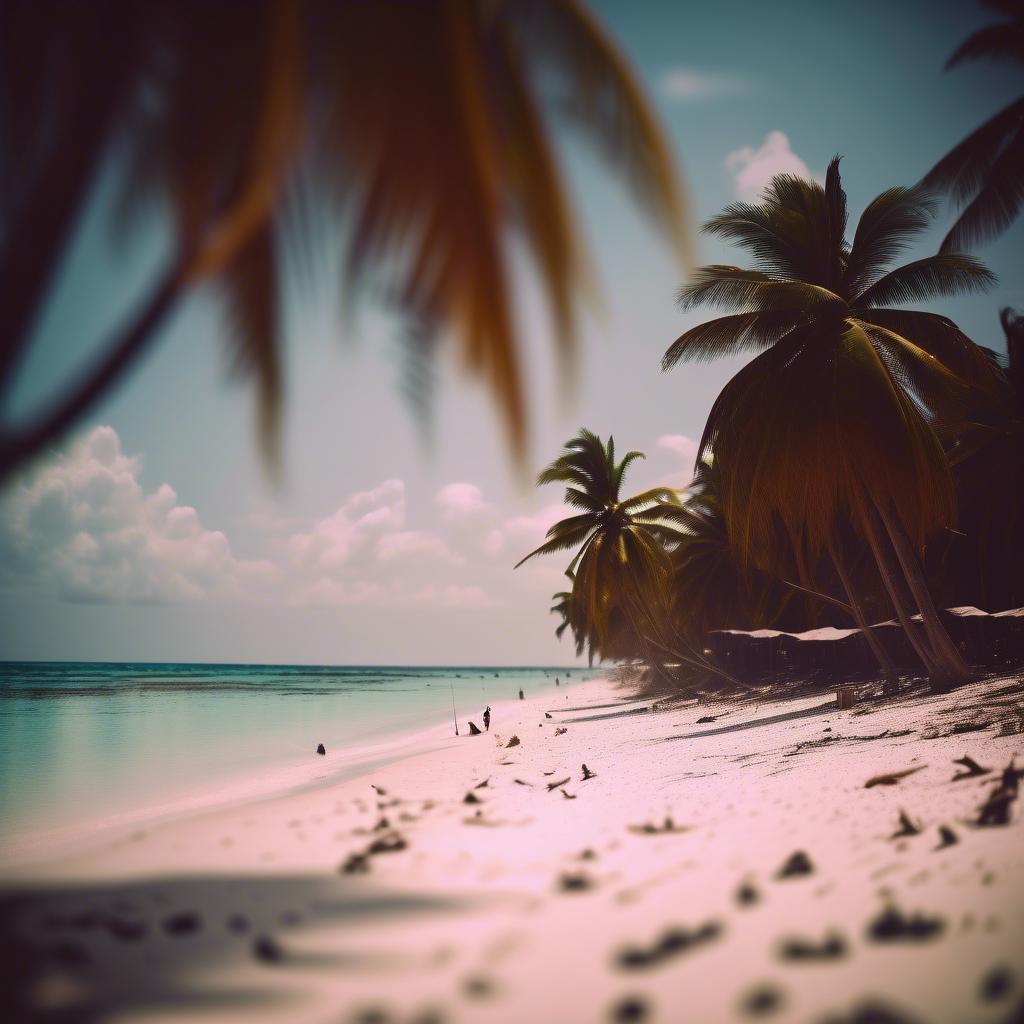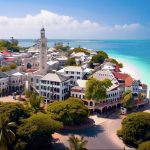Zanzibar, renowned for its stunning beaches and rich cultural tapestry, holds within its history a darker chapter that demands recognition and reflection. Teh Zanzibar Slave Trade, a notable yet somber part of the island’s past, played a crucial role in the broader regional dynamics of slavery in East Africa. As haunting tales of the past echo through time,understanding these narratives is imperative for anyone seeking a thorough view of Zanzibar’s history. In this article, we delve into the sites and stories that define the island’s complex relationship with the slave trade. Offering invaluable insights, Tours-Zanzibar.com guides you through these pivotal locations, providing a profound look into the legacy that continues to shape Zanzibar’s identity today. Join us as we explore the ancient milestones, key figures, and enduring reflections that emerge from this pivotal era.
Origins and Expansion of the Zanzibar Slave trade
Picture the bustling streets of Zanzibar in the 17th century—dhows lining the shore, traders haggling in multiple languages, and the echo of heavy footsteps on cobbled paths. but behind this vibrant scene was a grim reality. For centuries, Zanzibar was a key hub in the East African slave trade, a shadow that still lingers in the island’s history. Arab, Persian, and Swahili merchants worked with inland African traders to capture and transport thousands of men, women, and children from the African hinterlands to the shores of the Indian Ocean.
The demand for labor in plantations of Oman, Persia, and beyond fueled this trade, and Zanzibar, with its strategic location and deep harbor, became one of the largest slave markets in the region by the 19th century. The trade wasn’t just about brute force; it operated like a vast and systematic enterprise. Slaves where forced on grueling journeys, sometimes walking for months in chains. Those who survived were held in underground chambers—cramped, dark, and suffocating—before being sold at auction. Can you imagine what those walls would say if they could talk?
The routes and Markets
- Bagamoyo: The infamous “doorway to slavery,” where captives set foot on their final path to Zanzibar.
- Zanzibar’s Slave Market: Located in present-day Stone Town, this was the nerve center of the trade until its abolishment in 1873.
- Pemba Island: Though less known, it played a crucial role in supplying slaves for the clove plantations.
The abolition of the trade in the late 19th century, largely due to British intervention and the efforts of abolitionists like David Livingstone, marked the beginning of the end for this dark period. Today, when you visit sites like the Old Slave Market or Mangapwani Slave Caves with Tours-Zanzibar.com, you step into a history that is both haunting and eye-opening—a past that challenges us to remember, reflect, and ensure such tragedies never repeat.

Key Sites of the Slave Trade in stone Town
Uncovering the Legacy of the Slave Trade in Zanzibar
Stone Town might dazzle visitors with its charming alleys and spice-infused air, but beneath its beauty lies a painful history. The remnants of the East African slave trade are still visible today, telling stories of unimaginable suffering and resilience. Walking through these sites, one can almost hear the whispers of history in the ancient walls—a stark reminder of a dark past we must never forget.
The Former Slave Market & Anglican Cathedral
Perhaps the most haunting location is the former slave market, now home to the Anglican Cathedral of Christ church. This was once a place of unimaginable horror—thousands of men, women, and children were auctioned off to the highest bidder. In the cathedral’s basement, cramped chambers once held enslaved people, some dying before they even reached the market.
- The Slave memorial: A striking monument outside the cathedral features life-sized stone figures, bound by chains—an evocative tribute to those who suffered.
- The Cathedral’s Altar: Standing where the whipping post once was, the altar symbolizes the end of the slave trade in Zanzibar.
The Underground Slave Chambers
Deep beneath what is now the St. Monica’s Hostel lie the underground slave chambers. These suffocatingly small rooms, carved out of coral stone, once imprisoned enslaved individuals before they were led to the auction block.If you step inside, the air still feels dense, heavy with sorrow.
| Room Capacity | Conditions |
|---|---|
| Up to 75 people | Cramped,dark,and poorly ventilated |
Imagine standing where so many once waited in fear for their fate. It’s an experience that lingers long after you’ve left.
The Slave Routes to the Sea
From the market, enslaved people were marched through secret passageways to the coast, where dhows (conventional trading boats) waited to transport them across the Indian Ocean. Some of these routes remain,hidden among the maze-like streets of Stone Town. Guided tours reveal these harrowing paths, allowing us to walk in the footsteps of history.
Exploring these sites isn’t just about learning history—it’s about remembering those who endured, honoring their resilience, and ensuring their stories are never forgotten. with Tours-Zanzibar.com, this history comes alive in a way that’s as unforgettable as the island itself.
The Role of the Anglican Cathedral and Former Slave Market
In the heart of Stone Town stands the awe-inspiring Anglican Cathedral of Christ Church, a structure built directly on the site of Zanzibar’s largest slave market. Today,it stands as a powerful testament to the resilience of those who suffered and the relentless fight for freedom. The cathedral was commissioned by Bishop Edward Steere in the late 19th century, shortly after slavery was abolished in Zanzibar. Imagine this—where hymns now echo through grand arches, shackled men, women, and children once awaited their fate in despair.
What Remains of the slave Market?
Though the market itself is long gone, chilling reminders of its past are still visible beneath the cathedral. Descend into the underground slave chambers, where captives were crammed into tiny stone cells with barely any air. It’s unsettling to stand in the same spot where people once suffered so greatly, yet it’s also an chance to reflect on the progress we’ve made.
- Slave Holding Chambers – Dark, suffocating, and hauntingly preserved, these tiny rooms give an unfiltered glimpse into the horrors endured by countless enslaved people.
- Whipping Post Memorial – A poignant feature inside the cathedral, marking the very spot where enslaved individuals were publicly punished to determine their price.
- Stunning Cathedral Interior – Despite its painful history, the church itself is a stunning blend of Gothic and Arabic architecture, a striking contrast between past suffering and present peace.
Walking through this site is an emotional experience—it’s unfeasible not to feel the weight of history. But that is exactly why it must be remembered. If you’re ready to explore this historic landmark, Tours-Zanzibar.com can guide you through the stories that shaped Zanzibar’s past and the lessons that still resonate today.
Stories of Resistance and Abolition Efforts
Brave souls Who Fought for Freedom
Imagine the courage it took to stand against one of history’s darkest trades.While Zanzibar was a key hub of the Indian Ocean slave trade, it was also home to powerful voices of resistance. Locals, former captives, and global abolitionists all played a role in dismantling this brutal system. Their stories deserve to be told—not just as history but as reminders of human resilience. So, who were these brave souls? Let’s meet a few.
Key Figures in the Fight against Slavery
- tippu Tip – The Trader Who Changed Sides: Once one of Zanzibar’s most notorious slave traders, Tippu Tip eventually abandoned the business. His transformation offers a complex and fascinating perspective on the shifting tides of the era.
- Dr. david Livingstone – The Relentless advocate: The Scottish explorer didn’t just map the African continent—he exposed the horrors of the slave trade to the world. His accounts shocked Europe and fueled the abolition movement.
- Sayyid Barghash bin said – The Sultan Who Took a Stand: Under pressure from Britain, Sultan Barghash issued historic decrees limiting and, eventually, outlawing the trade in the late 1800s. His leadership marked a turning point.
sites of Resistance You Can Visit Today
Some places in Zanzibar still echo with the struggles of those who fought against enslavement. The Anglican Cathedral, built on the site of the old slave market, stands as a beacon of victory. Nearby, a haunting underground chamber—once used to imprison enslaved people—reminds visitors of the past’s harsh realities. And if you venture to the island of Changuu, once a holding station for enslaved individuals, you’ll find a place that now symbolizes survival.
What do these stories teach us? They remind us that even in the darkest times, people rise up, push back, and demand justice. As we walk in their footsteps, let’s carry their courage forward.
Preserving Memory: Museums and Memorials in zanzibar
Walking through Zanzibar’s historical sites can be a deeply emotional experience. You’re not just seeing old buildings—you’re stepping into stories of resilience, struggle, and survival. Some places carry a weight that lingers in the air, a silent whisper of the past that refuses to be forgotten. At the heart of these experiences are the museums and memorials dedicated to the island’s history with the East African slave trade.
The Anglican Cathedral and Slave Memorial
Perhaps the most poignant site is the Anglican Cathedral of Christ Church, built on the grounds of the former slave market. The church itself is an incredible piece of architecture, but its true meaning lies in what it replaced. Inside, a simple yet powerful memorial stands—life-size statues of enslaved people bound in chains, faces frozen in sorrow. The underground chambers where captives were once kept before being sold are hauntingly small and suffocating. Standing there, it’s impossible not to reflect on the unimaginable suffering endured within those walls.
Stone Town’s Museums: Echoes of the Past
If you truly want to immerse yourself in history, a visit to the Peace Memorial Museum and the Old Slave Market museum is essential. These spaces do more than display artifacts—they give voices to those silenced by history. Expect to see:
- Detailed exhibits on the transatlantic and East African slave trades
- Old photographs and first-hand accounts from those affected
- Historical documents that reveal the complexities of Zanzibar’s role in the trade
These museums aren’t about inducing guilt; they’re about understanding.They remind us that history is not just dates and facts—it’s people.And remembering those people is the least we can do.
Travel Tips for Exploring Zanzibar’s Slave Trade History
Travel Tips for a Meaningful Experience
visiting the historical sites of Zanzibar’s slave trade is more than just a tour—it’s a journey through a painful but critically important past. To truly absorb the history and respect the lives affected,it’s essential to be mindful of a few things.
Be Respectful and Prepared
- Dress Modestly: Many of the key sites,like the Anglican Cathedral,are places of remembrance. Wearing appropriate clothing shows respect for their history.
- Stay Emotionally Open: Some of the stories you’ll hear are heartbreaking. It’s okay to feel emotional—this history isn’t easy, but it’s important.
- Hire a Learned Guide: While you can explore on your own, a local expert from Tours-Zanzibar.com can provide details and personal stories that bring history to life.
Best Times and Ways to Explore
| Time of Year | What to expect |
|---|---|
| June – October | Cooler weather and less humidity make walking tours more comfortable. |
| November – March | warmer and more humid,but early mornings and evenings are still great for exploring. |
Want to make your visit even more impactful? Try reading up on Zanzibar’s slave history before your trip. Books like “The Door of No Return” will prepare you for what you’ll learn, making your visit far more meaningful.
To Wrap It Up
In exploring the history of the Zanzibar slave trade, we uncover a past that is both painful and essential to remember. The sites and stories associated with this period serve as powerful reminders of the resilience of those who suffered and the efforts made to abolish the trade. By visiting historical locations such as the former slave markets, underground chambers, and memorial monuments, we not only honor the memory of those affected but also gain a deeper understanding of the complex forces that shaped Zanzibar and the broader region. As we reflect on this history, it is crucial to continue educating ourselves and others, ensuring that the lessons of the past remain relevant in the pursuit of justice and human rights today.














